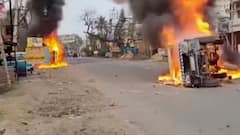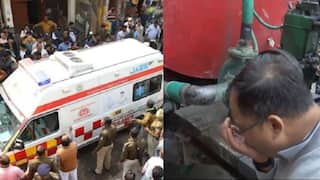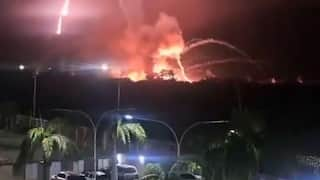Kanchanjunga Train Accident Probe Finds 'Lapses At Multiple Levels': 'A Crash Waiting To Happen'
In its probe report, the Commissioner of Railway Safety (CRS) pointed out lapses at multiple levels in managing train operations in automatic signal zones.

Kanchanjunga Train Accident: The accident of the Kanchanjunga Express accident involving a goods train was "waiting to happen" due to lapses at multiple levels, the Commissioner of Railway Safety said in its report. The accident took place on June 17 in West Bengal's Darjeeling district that left 10 persons dead, including the loco pilot of the goods train.
In its probe report, the Commissioner of Railway Safety (CRS) pointed out lapses at multiple levels in managing train operations in automatic signal zones, and "inadequate counselling" of loco pilots and station masters, as reported by news agency PTI. The report also recommended implementation of the Automatic Train-protection system (KAVACH) on top priority.
According to the CRS, wrong paper authority or T/A 912 to cross defective signals was issued to the loco pilot of the goods train involved by authorities concerned.
Further, the paper authority did not mention the speed that the goods train driver was supposed to follow while crossing the defective signal.
In view of the various lapses on part of the rail administration, the CRS said, "Due to improper authority and that too without adequate information, such an incident was an "accident-in-waiting," as quoted by PTI.
5 Trains Besides Goods Train Entered The Sections When Signals Turned Defective
In its investigation, the CRS discovered that besides the Kanchanjunga Express and the goods train, five other trains entered the section from when the signals turned defective until the accident occurred on that day. "In spite of issuing the same authority, different speed pattern was followed by loco pilots," it said, as quoted by PTI.
The CRS highlighted that only the Kanchanjunga Express followed the norm of moving at a maximum speed of 15 kmph and stopping for one minute at each defective signal while the rest of the six trains, including the goods train involved in the accident, didn't follow this norm.
This shows that "action to be taken when T/A 912 is issued to them is not clear. Some of the loco pilots have followed the 15 kmph rule while most of the loco pilots did not follow this rule. The absence of proper authority and that too without adequate information created misinterpretation and misunderstanding about the speed to be followed." PTI had first reported that the T/A 912 didn't mention speed restriction which the CRS has also flagged in its report as a major reason for the accident.
'Large Number Of Signalling Failures A Cause Of Concern'
The CRS classified the accident under the "Error in Train Working" category and said there was "inadequate counselling of loco pilots and station masters about train operation in automatic signalling territory creating misinterpretation and misunderstanding of rules," as quoted by PTI.'
The report also stated that the large number of signalling failures in automatic signalling territory is a cause of concern and should be taken up with those concerned to improve the reliability of the system.
'KAVACH Should Be Implemented On Priority'
"The occurrence of as many as 208 cases of Signal Passing at Danger (red signal overshooting) from 1.4.2019 to 31.03.2024, out of which 12 cases resulted in collision, highlights the limitations of preventive measures taken by zonal railways (counselling of loco pilot/assistant loco pilot, safety drives, etc.)," the CRS said, as quoted by PTI.
"This underscores the need for implementation of the Automatic Train-protection system (KAVACH) on top priority. Use of non-signalling-based systems such as Artificial intelligence-based detection of the RED aspect of the signal and providing an early warning to the loco pilot/GPS-based anti-collision systems shall be explored for provision in locomotive cabs across Indian Railways in non-ATP (automatic train protection) territory," it said.
The CRS also said that there was a shortage of walkie-talkies in the Northeast Frontier Railway (NFR) Zone under whose jurisdiction the accident took place and hence the goods train crew was not issued the "critical safety equipment".
3 Options In Case Of Multiple Signal Failures
The CRS said that in case of multiple signal failures there were three options left with the rail administration but none of them was followed. The first option was to let the drivers follow the general rule under which the loco pilot has been given instructions to stop the train for one minute at the defective signal and then proceed with great caution till the next stop signal.
The second option was that the drivers should have been issued a T/A 912 form with a caution order (mentioning the speed that the driver should have maintained).
In the Kanchanjuga tragedy, the T/A 912 issued to the goods train crew didn't mention the speed aspect.
The third option was that authorities should have treated that as a "major signal failure" and followed Automatic Block System. Under the provision, only one train is allowed to enter between two stations and till the time the proceeding train crosses the next station, no train is permitted to enter from the first station.
Related Video
Breaking: Ajit Pawar Takes Swipe at BJP, Targets CM Fadnavis Amid Maharashtra Civic Poll Battle


































